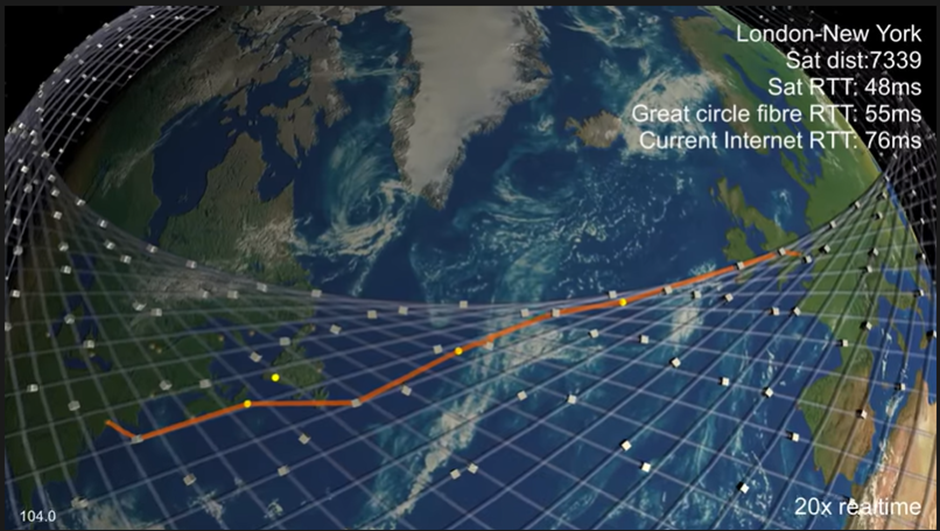Why Starlink might be a bigger deal than you think
You’ve heard of Starlink – SpaceX’s global Internet project – and you might have seen bright lines of satellites moving across the sky (click here for when to look), but if you haven’t yet stopped to appreciate just how incredible this project is then read on…
There are just under 2700 satellites orbiting Earth right now. Starlink will increase this number 5x with thousands more just from this one project. Each satellite essentially a flying, solar-powered wireless router. The solar panels fold out in a concertina and are actually really big - 3.1m wide x 10.9m long.

Starlink satellites orbit at an altitude of just 550km - which is less than a tenth that of traditional Low Earth Orbit (LEO) satellites. This close proximity to Earth is behind Starlink’s amazing latency figures of between 40-50ms (more on this later). Recent testing also shows Starlink delivering up to 100Mbps performance using standard equipment, which means Starlink can soon compete against every land-based ISP in the world!
Starlink’s early satellites required ground stations to communicate – i.e. data would bounce off satellites between different places on Earth; however, in September, SpaceX revealed their first successful test of ‘space lasers’ to deliver extremely high inter-satellite bandwidth. Because these lasers work in a vacuum, they are much faster than terrestrial / glass fiber-optic communications because the speed of light in glass is about half of that in a vacuum. In the future Starlink may be the fastest way of communicating across the globe.
The downside for SpaceX is that the low altitude introduces atmospheric drag on the satellites, which means each satellite needs replacing every 4-5 years! As of August 2020, SpaceX is launching 120 satellites per month. If you do the math, this number will need to increase to maintain the proposed number of satellites.
How does Starlink actually work?
Dan Maloney made a great video for Hackaday where he surmises how Starlink might use a combination of inter-satellite laser, plus ground-station relays to optimise latency and reduce jitter across the entire Satellite constellation.

I can’t recommend this video highly enough If you’re interested in a visual depiction about how real-time communications can work across multiple moving communication paths.
The reality
SpaceX is well on its way to becoming an internet service provider and, potentially, an internet company to rival Google and Facebook”. Ubiquitous satellite Internet is coming to everyone, delivered by swarms of satellites in the sky above us.
Elon Musk has huge ambitions, and to quote from Casey Handmer, “If I live long enough my grandchildren will be more flabbergasted that I’m older than Starlink than that I’m older than cell phones (museum pieces) or the public internet itself”
